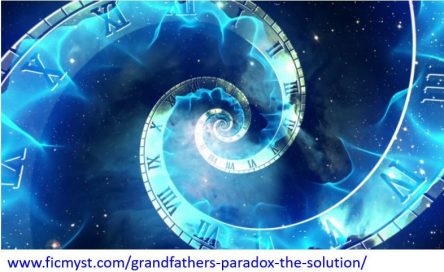
I will begin the concluding post of my hypothesis by emphasising what I said at the beginning:
I initially thought it was inconceivable that our time reckoning (calendar year) could be wrong!
I thought that, for my brain training, I would use the “three in one go” method to refute (for my amusement) the three most popular “phantom time theories” I had read.
I have found my refutation successful, but the PROBABILITY has INCREASED that our calendar was off, if not by the 200, 247 and 297 years given in the previous theories, but by the astronomically more possible 220 years!
The astronomical data cited in my hypothesis are from reliable online data of recognised institutions (e.g., NASA) and from programs of experts that have already applied the latest scientific results on the Earth’s non-uniform rotation rate. The programs cited work with ΔT values for the long past based on Morrison and Stephenson’s scientific paper published in 2004 or later ΔT calculations that differ only slightly.
Assuming (or even allowing) that the ΔT values were inaccurate and would change due to reducing the temporal distance of certain events by 220 years, only the hour-minute values would change. The essence of my hypothesis would remain valid. I find that the change in Delta T has little effect on the geographical location where the rare solar eclipses can be observed. In contrast, a change in Delta T would modify the site where more frequent lunar eclipses can be observed.
As additional quasi-proof of my hypothesis, I quote below some sentences from the abstract of a paper on dendrochronological scientific research, which, in a completely different approach, led to a very similar result to mine:
“We have then found a distinct correlation between recent Danish and Norwegian oak curves, and supra-long pine curves from 13 northern Scandinavia. Moreover we have found a distinct correlation between a long north-west European oak curve anchored 14 archaeologically in Roman time, and the Scandinavian pine curves, but 218 years later than expected. There is no correlation at or 15 near to the expected point of match. To resolve this problem, more data – still not available – would need to be analyzed, but from a dendrochronological point of view 18 we can not exclude the possibility that Roman time is conventionally dated too old by more than 200 years.”
(Dendrochronological dating of Roman time, draft, 2014‐04‐18, Page 2 of 37 16 17. 3 Petra Ossowski Larsson* and Lars-Åke Larsson, Sweden 4 * Corresponding author: petra@cybis.se)
I am sure the question has been raised in the mind of the dear reader: if the time reckoning is messed up indeed, why did they mess up it?
For my part, I can think of several different reasons (e.g., religious, superstitious, power, economic, etc. considerations). But to find out the real reason would require a deep knowledge of the history of the Roman Church. However, answering this question is, in my opinion, irrelevant until experts have thoroughly analysed and proven (if scientifically provable) whether 220 years of fictitious history have been inserted indeed.
With this last sentence, I also prepared the following one. I know: my reasoning is not sufficient proof that the AD chronology has been confused. However, I hope my writing is enough to make some bold experts ponder the astronomical facts.
I am aware that all these astronomical fits could, in principle, also be a whimsical play of “chance” by the periodicity of the phenomena. In addition to the ones I have raised, I merely propose re-examining the astronomical appropriateness of other historical data using scientific methods!
Hence, my new hypothesis is a WORK-HYPOTHESIS (I want to give work to researchers), and I only state the following:
The new historical dates calculated in my scenario seem fit "by the stars" better with early historical texts, legends and the Gospels than the current, scientifically accepted datings.
Of course, even so, I cannot be sure that our time has been messed up. The confusion of AD Time remains a conjecture that would require a tremendous amount of work to prove.
I am aware that I have not written a scientific dissertation and am an “outsider” in the relevant scientific fields. So, my hypothesis is “negligible” in scientific circles.
I would therefore be particularly pleased if the authorities in the fields of history and chronology would be willing to confront me with my arguments. I would particularly welcome it if I could accept professional objections to the details. I would, of course, also bow to a complete rejection of my hypothesis, backed up by scientific arguments.
To return to the famous quote by Niels Bohr, which I distorted in the introduction, I will put a further twist on it:
“Prediction is very difficult, especially about the future” OF THE PAST.
I enjoyed inventing my astronomical speculation above, but I see it as a “playful thought experiment”. Maybe it is only an amateur “thought-provocation” to amuse some experts.
However, I hope the dear reader has enjoyed my game, too.
“Though this be madness, yet there is method in ‘t.” (W.Shakespeare: Hamlet)
“For there is nothing hid, which shall not be manifested; neither was any thing kept secret, but that it should come abroad.” (Mark 4:22)
Sincerely
LOHONYAI, Miklós Mihály MSc(Eng) Electronic and Digital Systems, TU Budapest Theory born: 30 September 2017. Date of starting this blog: 1 April 2022.
